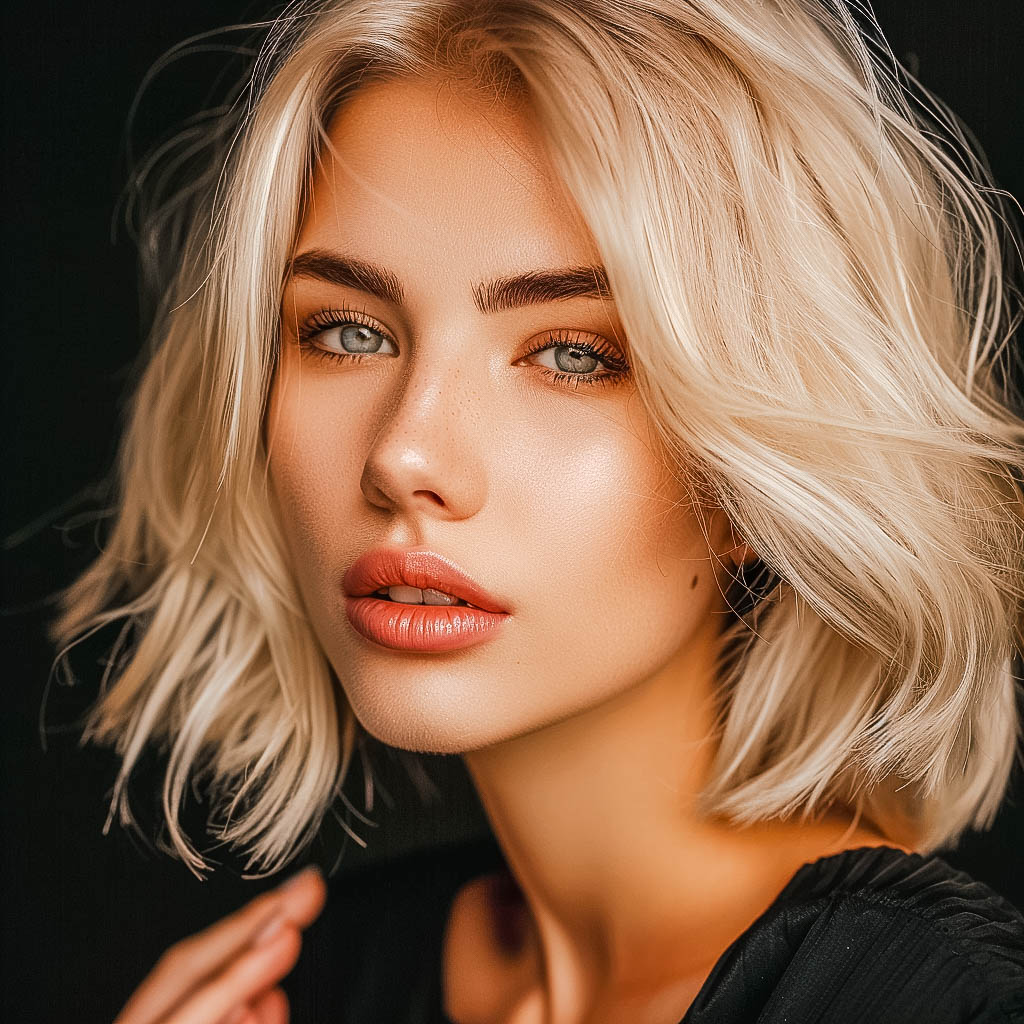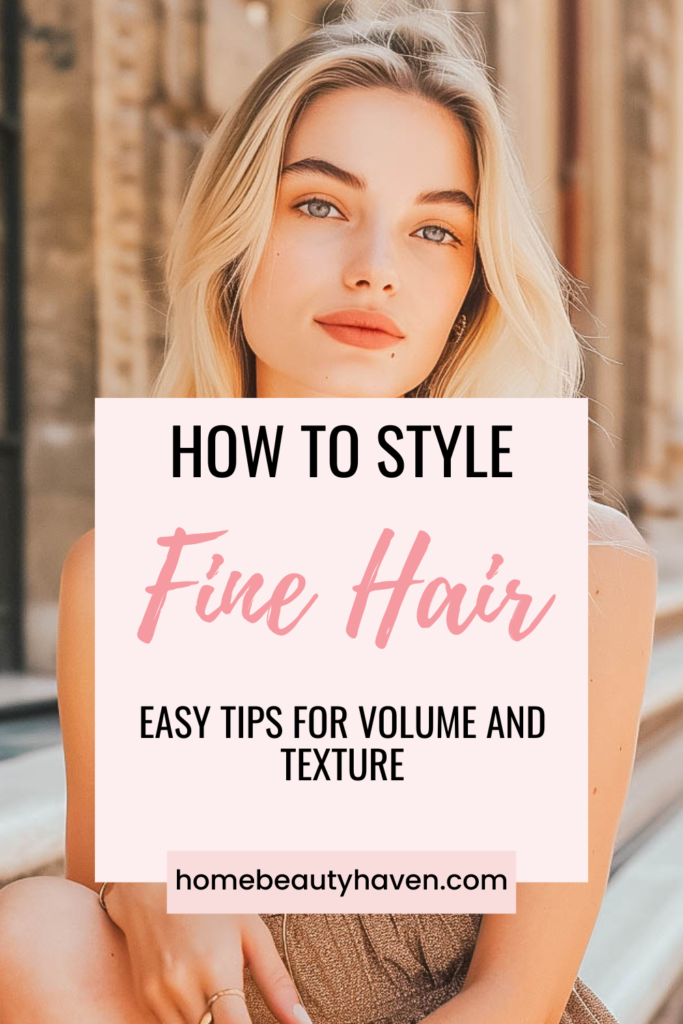
How to Style Fine Hair: Easy Tips for Volume and Texture
Styling fine hair can be a delicate task. Those with this hair type often struggle to maintain volume and may find their strands easily become weighed down by products. To combat these issues, it’s important to approach styling with techniques and products specifically designed to enhance the natural texture without overburdening it. With the right approach, fine hair can hold styles elegantly and can exhibit a lively, airy quality that is both touchable and resilient.
Understanding the natural texture of fine hair is key in choosing the most effective styling methods. Fine hair is typically more prone to oiliness and can appear limp if not styled correctly. Instead of heavy creams and serums, individuals with fine hair benefit from lightweight mousses, volumizing sprays, and root-lifting products. These help to add the desired body and shape, allowing the hair to reflect light better and look fuller.

When it comes to the actual styling process, less is often more for fine hair. Overworking the hair with intensive heat styling or backcombing can cause damage and breakage. Gentle brushing, blow-drying with the right technique, and the judicious use of hot tools can create a variety of looks, from sleek and smooth to voluminous and textured, without jeopardizing the hair’s integrity.
Mastering the Cut and Style
Optimizing the haircut and style for fine hair can significantly enhance both the look and manageability of one’s hair. This section focuses on expert-approved methods to choose and maintain the best haircut and styles for fine hair.
Choosing the Right Haircut
For individuals with fine hair, selecting the right haircut is paramount. Fine hair benefits from styles that create an illusion of fullness and body. Pixie cuts are often recommended by celebrity hairstylists for their ability to add volume and are easily styled for a chic, sophisticated look. If someone prefers slightly longer hair, a textured lob or a bob—especially a stacked bob—can provide movement and lift at the crown, giving the appearance of thicker hair.
For those inclined to keep their hair longer, face-framing layers or long layers can create softness and reduce weight, allowing for natural movement and body. It’s advisable to avoid one-length cuts as they can make fine hair look even thinner. Instead, styles like a deep side part or soft beach waves can introduce texture and volume to the hair without compromising its health.
- Recommended Haircuts for Fine Hair:
- Short Hair: Pixie cut, stacked bob
- Medium Length: Textured lob, asymmetrical bob
- Long Hair: Long layers, face-framing layers
Celebrity Inspirations:
- Pixie Cut: Emma Stone
- Textured Lob: Zoe Saldana
- Layered Hair: Jourdan Dunn
The Art of Styling Fine Hair
Mastering the art of styling fine hair is about accentuating volume and texture while avoiding styles that can weigh the hair down. When styling, it’s important to focus on techniques and products that enhance the hair’s natural volume and create the appearance of fullness. A half-up, half-down style offers volume at the crown; creating a subtle topknot adds lift. Utilizing a side part can give the illusion of more voluminous hair, and for those with wavy or curly hair, embracing the natural curls or waves can add both texture and body to their look.
Experts often recommend applying a volumizing product to the roots and using a blow dryer with a round brush to incorporate lift and volume. Velcro rollers or a large barrel curling iron can also be used to craft soft waves or curls that make fine hair appear thicker.
- Styling Techniques for Fine Hair:
- Volume at Roots: Apply volumizing products; blow-dry upside down.
- Soft Curls/Waves: Use large barrel curling iron or Velcro rollers.
- Half-up, Half-down: Offers lift at the crown.
- Topknot: Provides height and volume.
By carefully selecting the right haircut and mastering the styling techniques, individuals with fine hair can create the appearance of a fuller, more voluminous mane. Whether one prefers a striking pixie or flowing layers, the key is to work with the hair’s natural characteristics to achieve the desired style.

Optimizing Hair Health and Volume
Achieving optimal hair health and volume starts with proper care and the right styling techniques. This ensures that fine hair looks fuller and more vibrant without causing damage.
Hair Care and Treatments
Shampooing and Conditioner: Using a volumizing shampoo and a lightweight conditioner can cleanse the scalp effectively and condition the ends without weighing down the hair. Integrating a clarifying shampoo once a week helps remove product buildup, ensuring volume isn’t compromised.
Hair Treatments: Regular trims prevent breakage and maintain healthy ends, while occasional deep conditioning treatments can strengthen fine strands. For added texture and volume, salt sprays or thickening sprays can be applied to the roots.
Avoid Overwashing: To prevent dry hair and scalp irritation, limit shampooing. Instead, incorporate dry shampoo to absorb excess oil at the roots, providing instant lift and volume.

Healthy Scalp: A healthy scalp promotes hair growth. Gentle massage increases blood flow, and avoiding harsh chemicals keeps the scalp environment balanced.
Styling Techniques and Tools
Blowout: Use a round brush to create tension at the roots during a blowout for maximum height. A blow dryer with a nozzle attachment directs the airflow and minimizes fly-aways.
Heat Styling: Always apply a heat protectant before using tools like a flat iron. Opt for heat styling on the lowest effective setting to avoid damage.
Volumizing Products: Apply mousse or volumizing sprays to damp hair, focusing on the roots. Blow dry with the head tipped forward to boost volume.
Styling with Tools: Velcro rollers can create soft, beachy waves without excess heat, while a curling iron used sparingly can add texture. Utilize tools judiciously to prevent hair stress.
Backcombing: Carefully backcomb near the roots with a fine-tooth comb to introduce volume, then smooth over the top layer for a polished look.
Choosing the Right Products: Select volumizing products meticulously, avoiding heavy pomades and waxes. Products promising a “wet look” might contribute to limp hair.




